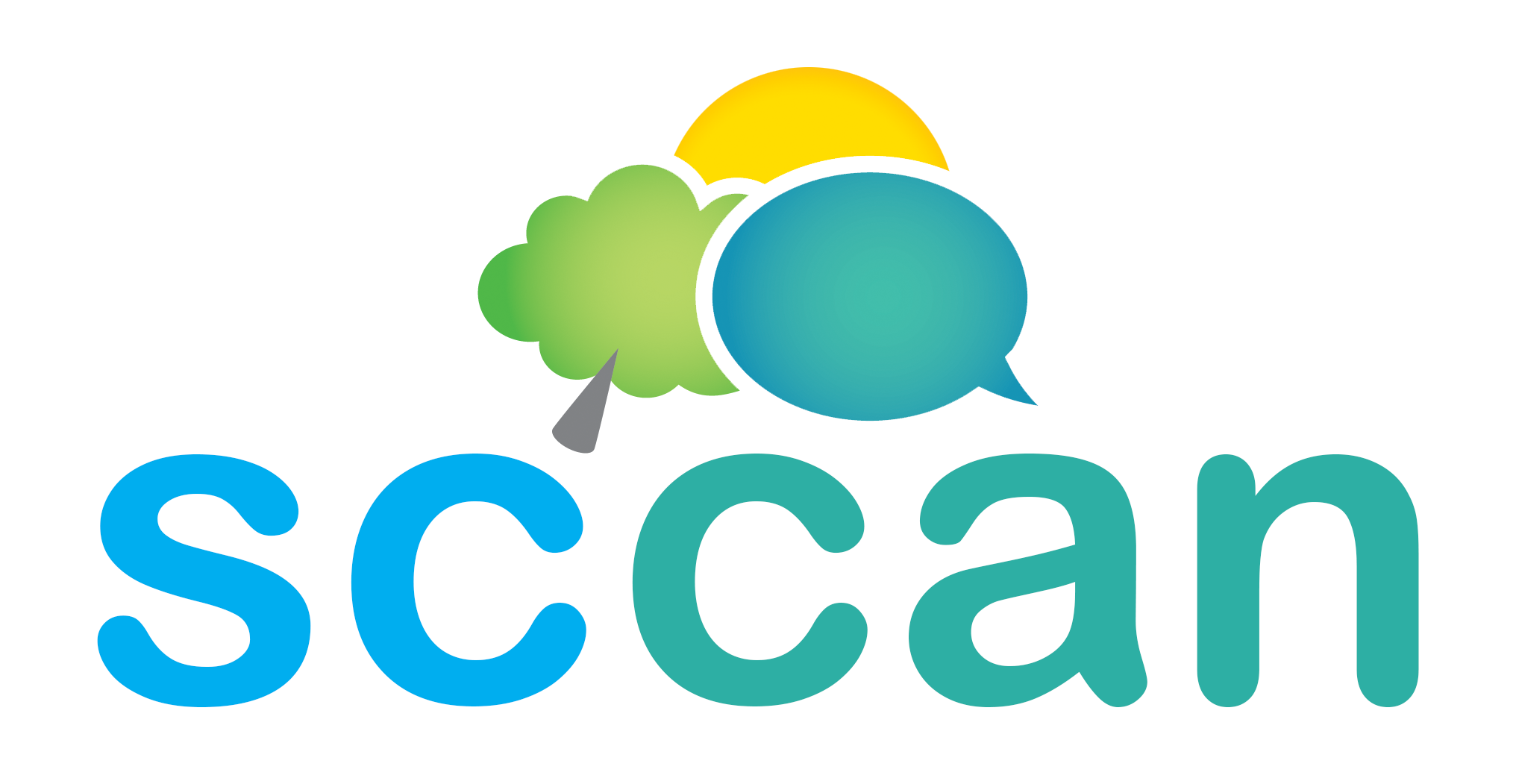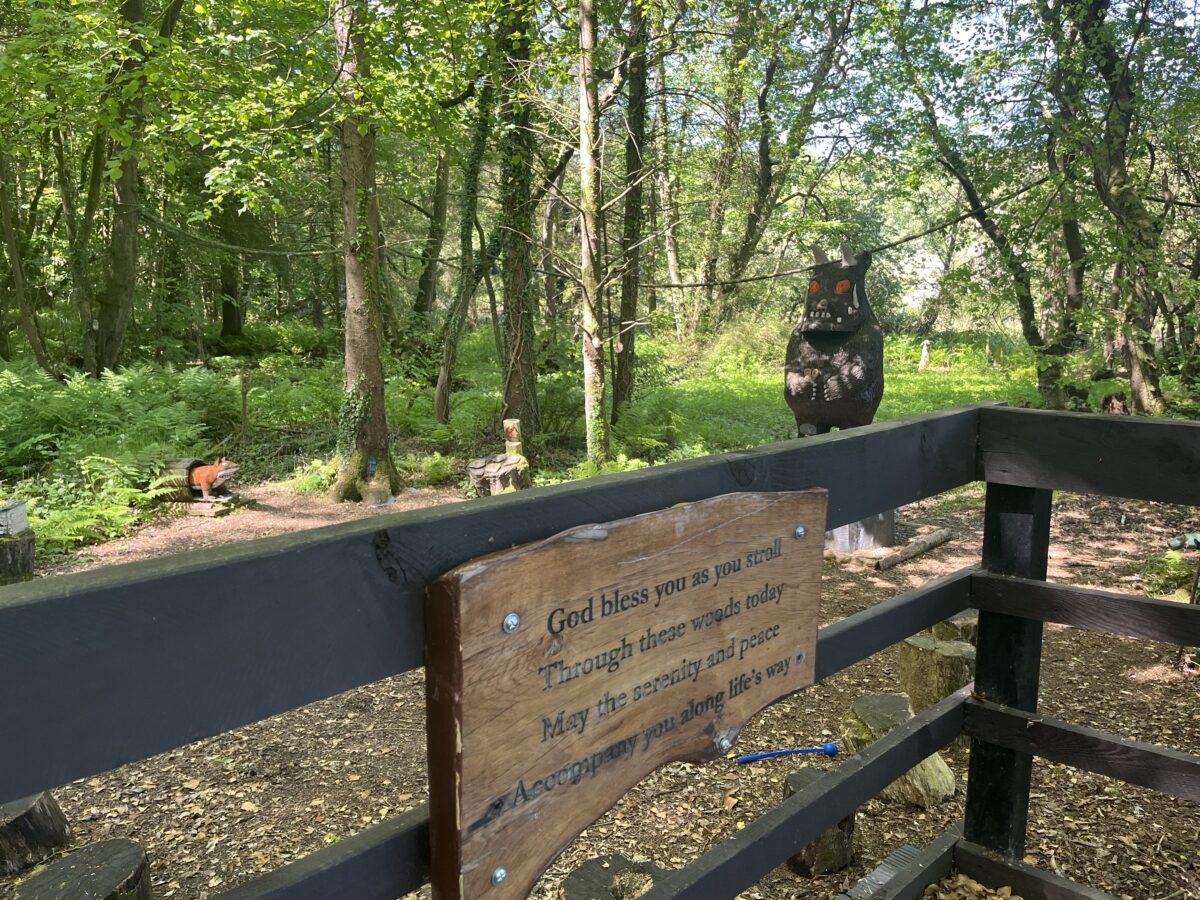An event hosted by Children’s Parliament, in partnership with members of children’s parliament from Kirkcolm and Leswalt Primary Schools. For a few months, the children explored the Scottish Government’s 2030 Action Plan for Learning for Sustainability, looking closely at it through the lens of the four learner settings. This is how it went, through the eyes and words of Story Weaver Joana Avi-Lorie.
As I stepped into the bright serenity of the Aldouran Wetland Garden, I was greeted first by birdsong and shortly after by Jane, one of the garden’s dedicated volunteers. With a kind smile, she offered to take me on a little tour. As we wandered through the different spaces and features, she shared the lovely story behind this special place.
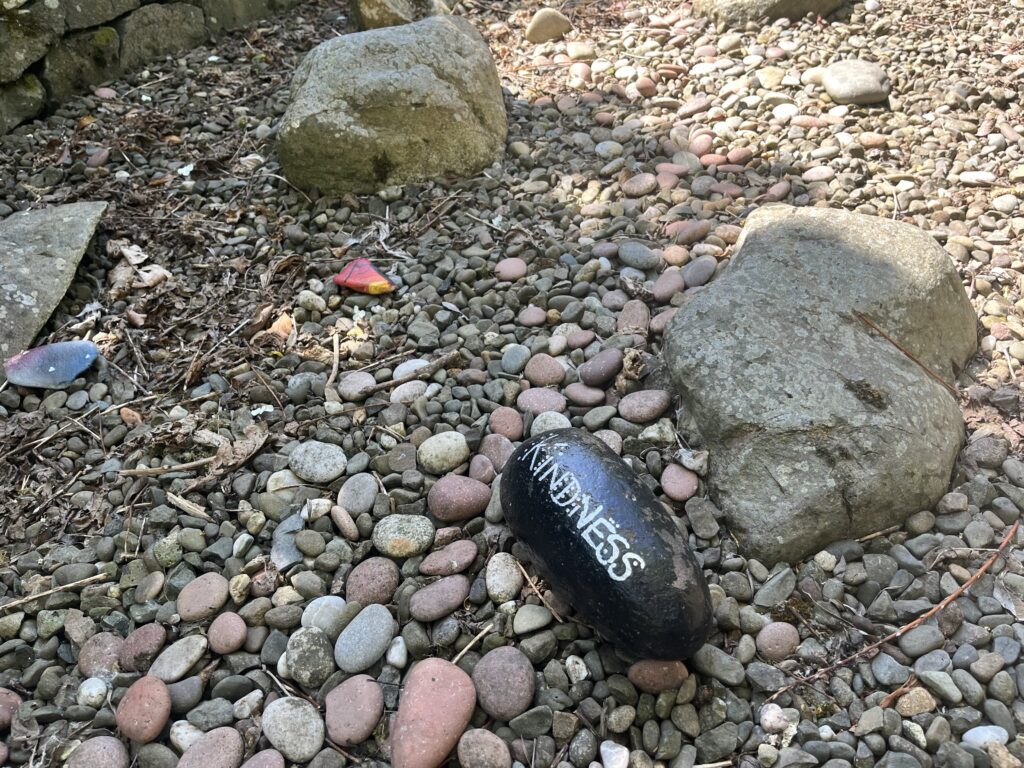
Aldouran Wetland Garden was started by a family with special needs children. It was meant to be a space of respite, both for them and for other families facing similar challenges. The garden was born out of love and necessity, a sanctuary where nature and nurture blossom together. When their charity eventually ran out of funds, it could have been the end of the story of Aldouran Garden—but the community took over.

Today, thanks to the efforts of around 30 volunteers, the garden thrives as a symbol of resilience and shared purpose. It’s a living, breathing example of what people can do when they come together to protect and enjoy something that matters to them.
This Spring and Summer, the wetland isn’t so wet. Drier and warmer days have delayed the building of a new moist area to cultivate some of the native plants that thrive in swampy grounds and expand the habitat for some of the local species as their populations grow into healthier levels. The water in the pond is low too, compared to previous years.
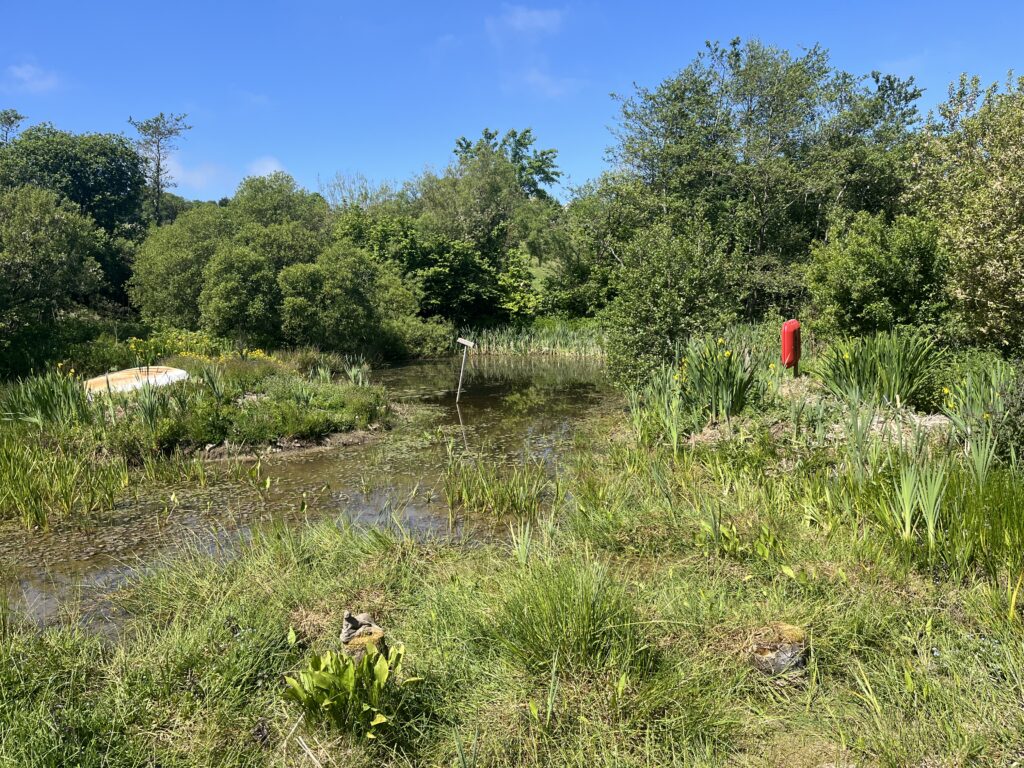
On this May morning, it wasn’t just the bees and other insects that buzzed around Aldouran Wetland Garden. Children from two local schools (Leswalt Primary and Kirkcolm Primary) had gathered for a special presentation. Over the past few weeks, these students have been investigating how their schools impact the natural world around them—and more importantly, how they could support that environment to flourish.
As part of the project, the Children’s Parliament invited the young students to explore themes beyond yet connected to the ecology of our planet. They learned about human dignity, children’s and nature’s rights, and their role as caretakers of the environment. Today, they were here to share what they had discovered—and what they believed needed to be heard.
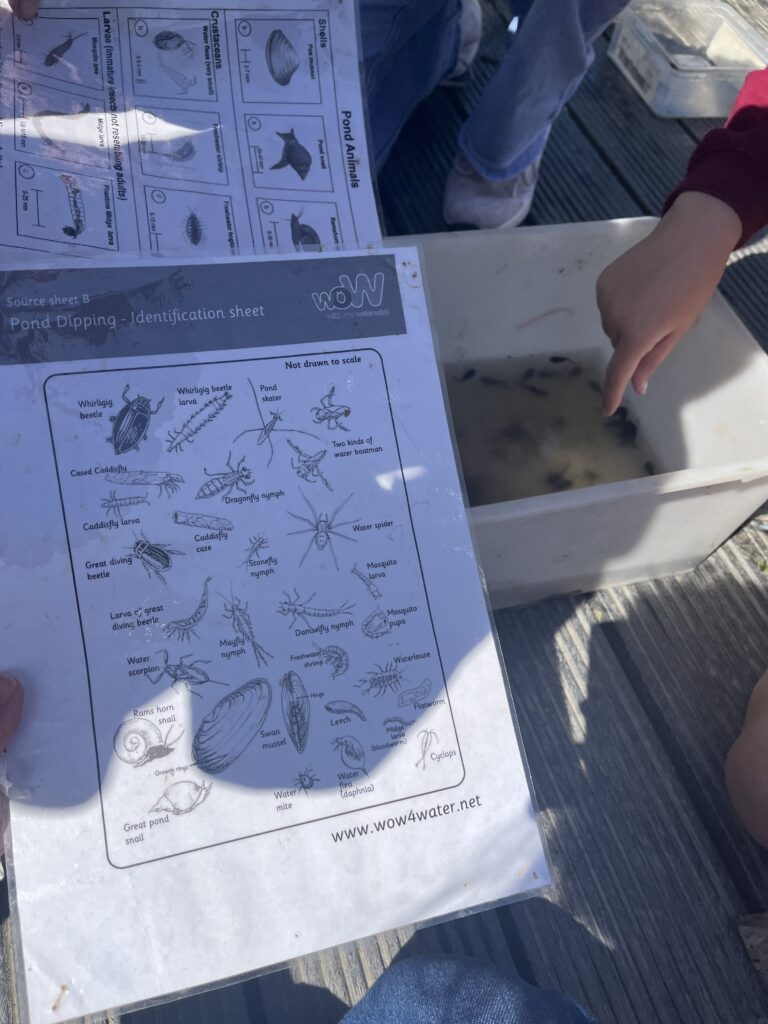
As part of the day’s activities, we made art to represent nature connection, and then the children guided us through a pond dipping activity, examining the tiny water creatures that share the garden with us – tadpoles, several insect larvae such as dragonflies and midgets, and water fleas. There is commotion, curiosity and pure joy at the sight of all these tiny, interesting beasties. The project also included getting to know the people in their community better through their environmental investigation and awareness-building activities, and the children are proud to know more about all the humans and other forms of life they share their local area with.
A few steps away into the woods, a bird ringing demonstration gave us all an up-close look at conservation in action, helping us understand how tracking bird populations can help protect them. Ringing a brood of baby blue tits was a peaceful moment of connection. A special needs student who stayed with our group held the baby birds with such grace and care, and it made me think of the children for whom this garden was originally made for.
I was so moved by this event I kept wishing my son was there with me. I decided to take an unfertilised egg back home, after cleaning it well (wild birds can always have diseases, so do clean your nature samples and souvenirs!) to show it to my little son. He’s only two years old, so of course he crushed it accidentally, unable to manage his excitement and his hand. But in the end, it was about the journey, carrying that precious little egg through four hours and three trains, holding so dearly to the memory of that day and what it meant to me, caring for each other.
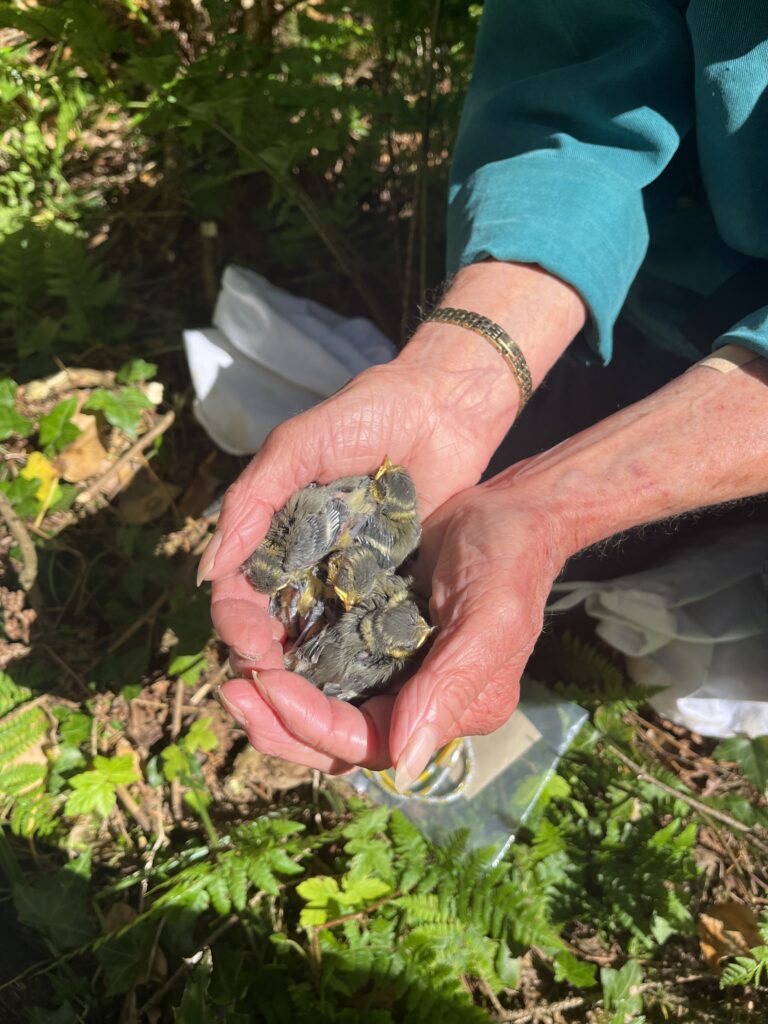
We finished by planting a tree, which many of us will hopefully see grow. There was something profoundly hopeful about watching these children connect so directly with nature. Their enthusiasm wasn’t just for the activities—it was rooted in understanding. I believe they knew why it mattered. I felt incredibly grateful to the children and the educators, the volunteers, the amazing folks from the Children’s Parliament. I felt grateful for the natural beauty of Aldouran Wetland Garden and the opportunity to witness a little bit of its story and its history.
This isn’t just a garden. It’s a legacy of love, learning, and community. And it’s growing.
Thank you!
For those that were unable to attend, the Children’s Parliament will be creating a digitalised version of the event with key points that came out of the project, quotes from the children and images capturing the days events, alongside our report and case studies from the school.
Please feel free to get in contact with them you have any further questions, and would like links to access the above mentioned.
